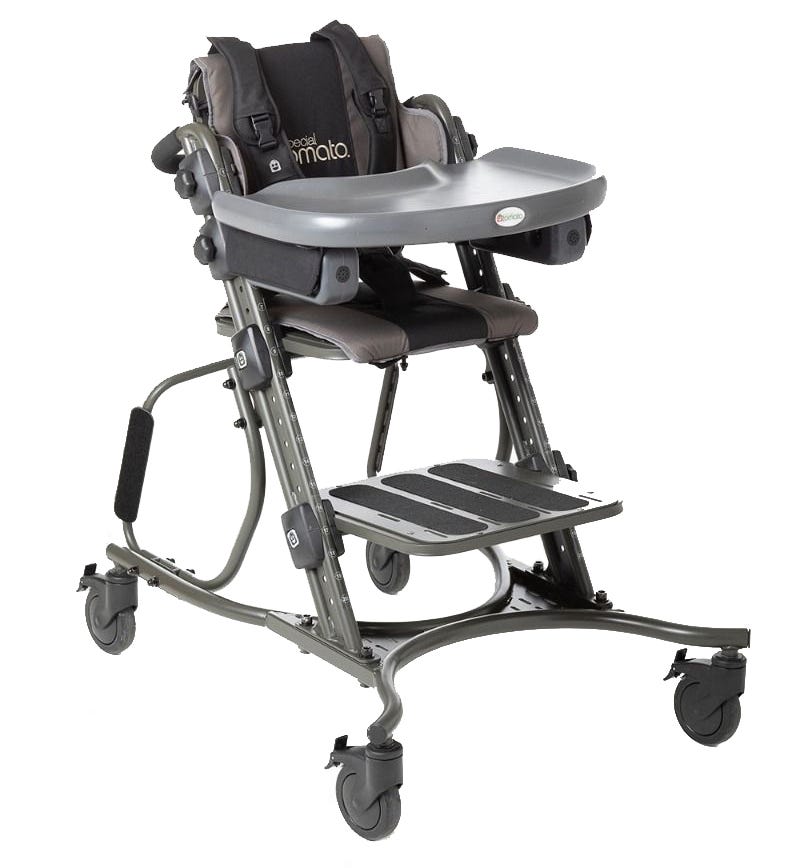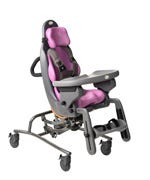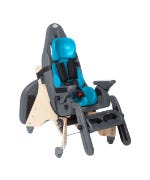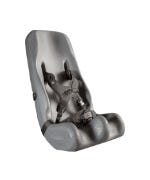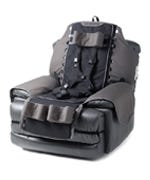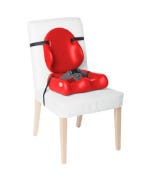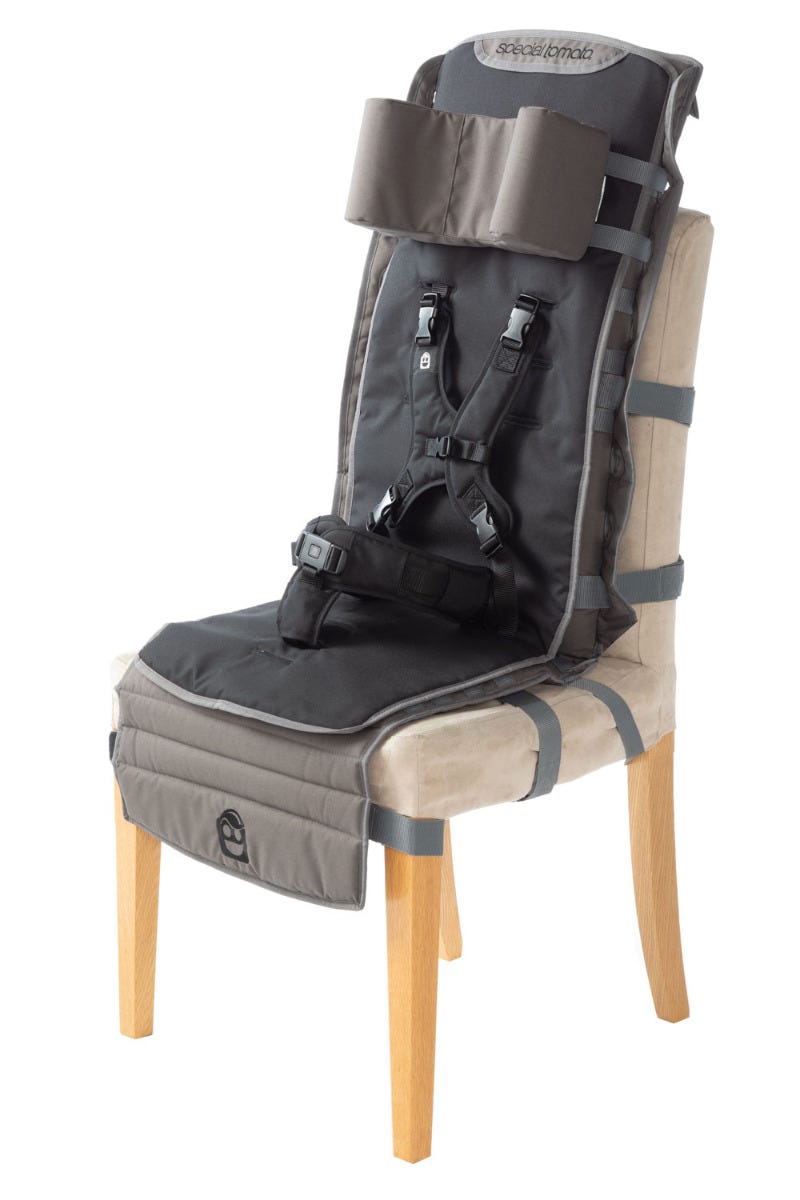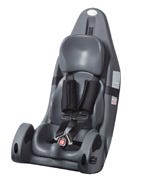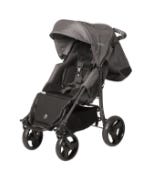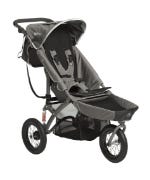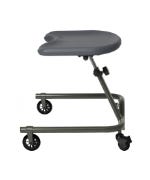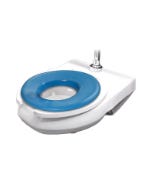How To Choose the Best Walker or Gait Trainer
By Katie Bergeron Peglow, PT, MS
With so many special needs walker and special needs gait trainer options available, finding the best one can be an overwhelming task. There are a few basic questions that you need to ask yourself. Here are four to get you started.
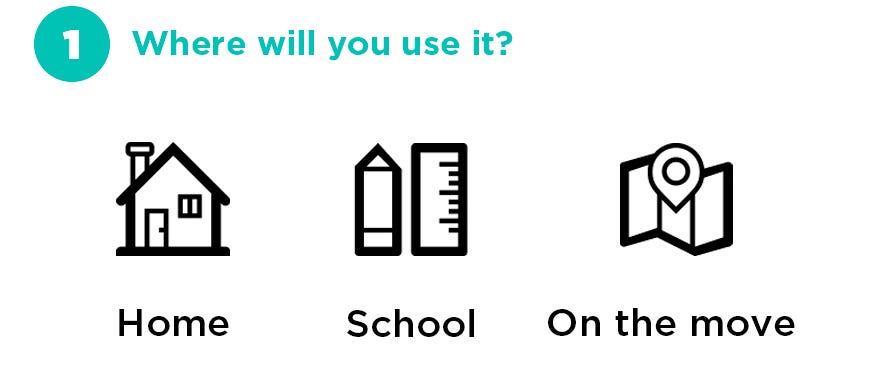
Home:Carrying out therapy goals at home can sometimes be overwhelming. When choosing a walker or a gait trainer, make sure that you know how wide doorways, hallways and spaces around furniture are. This will help determine if the walker or gait trainer will fit in your home. Another thing to consider is the weight of the walker and gait trainer. If you have multiple floors in your home, having a light-weight walker or gait trainer to carry up and down stairs will be much easier for the caregiver and/or user. Storage is another consideration. When it’s not being used, is there a good space to “park” the walker or gait trainer or will it need to be folded up and stored away?
School: In a school setting, knowing the type of terrain the user will need to traverse over will be important. Concrete sidewalks, grassy lawns, and playground may require bigger pneumatic wheels. If the walker or gait trainer will be used mainly in hallways and classrooms with smooth floors and/or industrial rugs, smaller, solid wheels should work well.
On the Move: For children and young adults that are using a walker or gait trainer to get around independently in a variety of settings, you may need to consider a walker or gait trainer that provides versatility such as: swivel wheel locks, anti-reverse mechanisms, or a fold-down seat if they need a break while walking long distances.
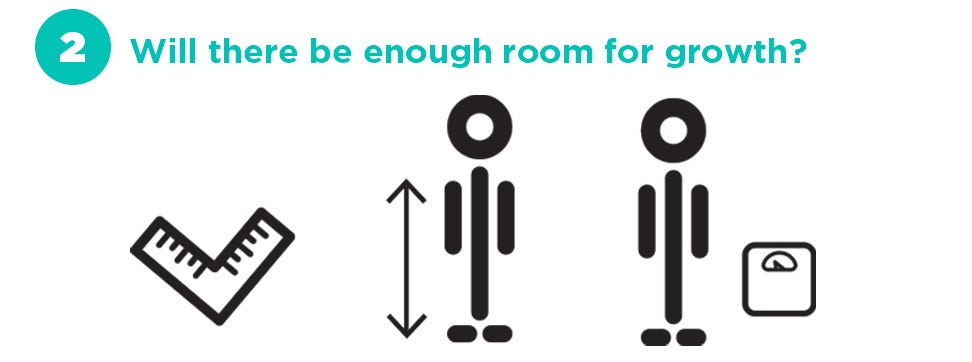
It is always important to order a special needs walker or gait trainer to fit your child now. However, you also want to make sure that there will be years of growth available in the adaptive equipment that you purchase. Most walkers and gait trainers have plenty of growth built into them. Your child's most important measurements for fitting a special needs walker or gait trainer are:
- Floor to Hip Height - corresponds with handle height of a walker
- Floor to Elbow Height - corresponds with height of the forearm support on a gait trainer
- Weight - corresponds with the maximum weight capacity of the walker or gait trainer
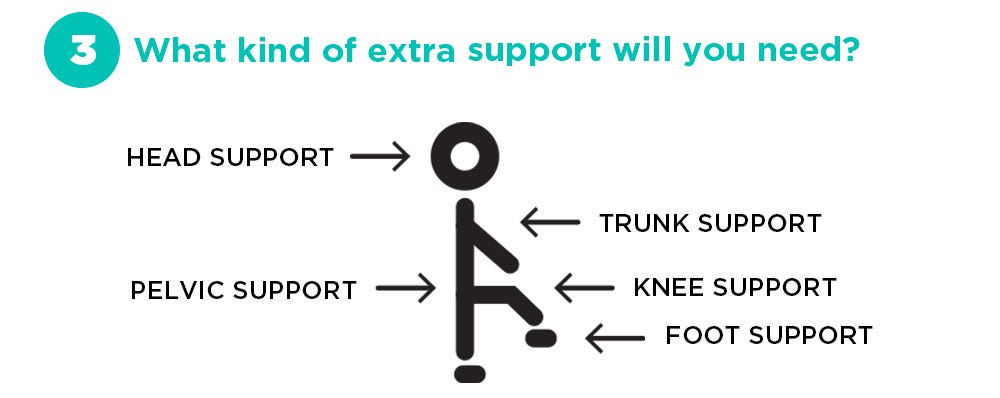
Our therapists can help you with a proper fit… to start please click SIZING HELP and complete a simple form. Special needs walkers and gait trainers offer extra support to help the user maintain a standing position while walking. The amount of support can be customized by adding different accessories for the areas of the body that need assistance. To view the available accessories for each item, click on the "Accessories" Tab. Some of the most common areas that require positioning accessories are: trunk, arm, pelvis, knees and feet.
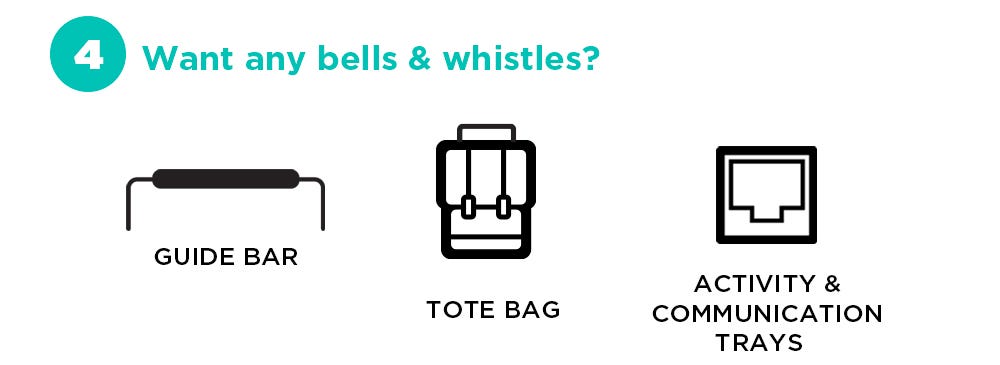
Typically "Bells + Whistles" on special needs walkers and gait trainers add to the user’s experience. A Guide Bar provides a tool for a caregiver to use to help encourage movement for children just learning to use a walker or gait trainer. A Tote Bag offers a place for the user to put items to take with them, like toys, books, phones and wallets. A Communication Tray provides a secure spot for most types of communication system to be placed. Many other "Bells + Whistles" are often available. Click on the "Accessories" Tab on the item page to view all of the offerings for each item.
Please feel free to or call us toll free at (800) 371-2778 with any questions that you may have about finding the best special needs walker or gait trainer choice for you and your child. We are here to help you!


